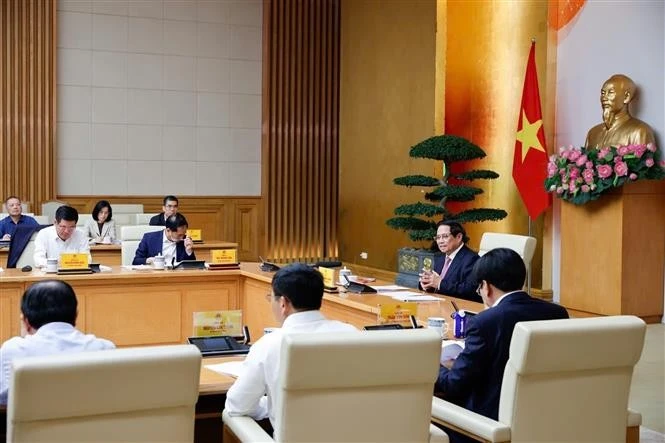# Navigating New Challenges: Vietnam’s Unexpected Tariff Shift with the United States
Vietnam, a nation with a rapidly growing economy and a complex history with the United States, find itself at a crossroads due to a surprising shift in trade tariffs. This development has raised eyebrows among investors, business leaders, and policymakers given the two countries’ strengthened strategic and economic ties in recent decades.
## A Surprising Adjustment
In a rather unexpected move, Vietnam has been subjected to a significant increase in tariff rates by the United States. This adjustment comes as a shock, considering the history of growing partnership and cooperation between the two nations since normalizing relations. The steep tariffs pose challenges not only to Vietnam’s export-driven economy but also to the broader economic and strategic collaboration efforts with the U.S.
## Vietnam’s Economic Landscape and U.S. Relations
Over the past few years, Vietnam has gained recognition as a burgeoning economic powerhouse in Southeast Asia. The nation has been actively engaging in building robust trade relations, attracting foreign investments, and fostering a free-market economy. The U.S. has played a crucial role in this transformation, emerging as one of Vietnam’s most significant trading partners. This relationship has been mutually beneficial, with both nations enjoying access to key markets and resources.
However, the recent tariff imposition by the United States might put these gains at risk. Understanding the implications of these tariffs not only on bilateral trade but also on Vietnam’s broader economic landscape is crucial for stakeholders involved.
## Potential Implications of the Tariff Hike
The increased tariffs could significantly affect Vietnam’s key export sectors, including electronics, garments, and agricultural products, which are vital components of its economy. There’s a potential ripple effect that could lead to reduced competitiveness, impacted revenues and possibly job losses in these critical sectors.
Furthermore, these tariffs might influence future foreign direct investments (FDIs). Investors tend to seek stability and predictability in trade policies when making investment decisions. Sudden changes in tariff structures can contribute to a perception of risk that might deter potential investments, not only from the U.S. but from global investors watching the situation unfold.
## Strategic Considerations and Moving Forward
The unexpected tariff increase might also prompt a recalibration of Vietnam’s foreign and economic strategic policies. It may drive Vietnam to strengthen economic ties with other countries in the Asia-Pacific region and beyond, diversifying its economic dependencies and alliances.
In response to these challenges, there could be a heightened emphasis on diplomatic engagements to negotiate and hopefully mitigate these tariffs. Open dialogue and continued negotiations between the U.S. and Vietnam are essential to resolving these trade issues, ensuring that both nations work towards a mutually beneficial economic environment.
## Conclusion: The Road Ahead
As Vietnam navigates this complex scenario, the outcome will significantly depend on how effectively the nation can leverage its diplomatic channels and continue to engage on the global stage. For the U.S., recalibrating the tariff strategy might be necessary to maintain a healthy, productive relationship with Vietnam, especially given its strategic position in Southeast Asia and growing economic capabilities.
The situation underscores the intricate dance of international relations and economic strategies, where decisions in one part of the globe can impact far-reaching global dynamics. As both nations continue their 21st-century partnership, the hope remains that mutually advantageous solutions can be found to overcome the current economic challenges.










